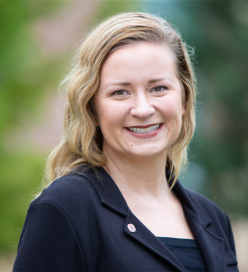
Dr. Gina Scott Ligon
NCITE: The New Center of Excellence for Counterterrorism and Targeted Violence Research for the Department of Homeland Security
November 12, 2020
Location: Access Grid----All SPACT Campuses
Bio:
Gina Scott Ligon is co-founder and director of NCITE, a Department of Homeland Security academic Center of Excellence for Counterterrorism and Targeted Violence Research.
An Oklahoma native who witnessed the aftermath of the 1995 Oklahoma City bombing, Ligon dedicated her career to studying the subject of extremist violence and has established herself as a national subject matter expert in this field. She has used her doctorate in industrial and organizational psychology to explore how terrorist and violent extremist organizations work and are led. She has been a professor, journal editor, author, and speaker on the subject of terrorist and extremist violence. Her strident work in the field, combined with her collaboration with 50 leading terrorism research experts, led to the creation of NCITE.
In 2020, in the midst of an historic year with challenges swirling around a pandemic and deeply divided nation, the University of Nebraska Omaha launched the center, funded by the Department of Homeland Security to be its next Center of Excellence for Counterterrorism and Targeted Violence Research for the next 10 years.
Ligon received her Ph.D. in industrial and organizational psychology and minor in quantitative psychology from the University of Oklahoma. Prior to joining UNO, she was a full-time faculty member at Villanova University in the Graduate Programs in Human Resource Development. She also worked as a director of performance consulting at St. Louis-based Psychological Associates. Her research program focuses on the identification and development of high-level talent. She has specific expertise in innovation and leadership and has published over 70 peer-reviewed journal articles and book chapters on these subjects.
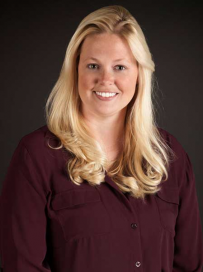
Dr. Anna Kosloski
The Oldest Profession meets Technology of the 21st Century: Commercial Sex in the Modern Era
November 2, 2020
Location: Access Grid-----All SPACT Campuses
Bio:
Dr. Kosloski is an Associate Professor in the School of Public Affairs at the University of Colorado, Colorado Springs (UCCS) where she teaches criminal justice courses. Dr. Kosloski’s research is focused on the intersections of gender and crime. This intersect perhaps is best illustrated through her research on human trafficking and the commercial sex industry, where she explores demand for commercial sex through online venues. Dr. Kosloski believes research can be an impetus for action and regularly partners with law enforcement and nonprofit agencies to use research as a tool for organizations in their response to human trafficking crimes and survivor services.

Dr. C.Y. Jiang
Fabrication of Anti-Counterfeiting Labels using Surface Enhanced Raman Scattering
August 6, 2020
Location: Access Grid---All SPACT Campuses
The development of novel security materials plays an essential role in fighting against counterfeiting to protect the health, the economy, and national security. The intrinsic advantages of surface enhanced Raman scattering (SERS) technique allow to prepare complicate nanocomposite materials with fingerprint characteristic spectra. These materials can be used as anti-counterfeiting labels which can have high level security information and enormous encoding volume. In this talk, I will first give an introduction on the SERS technique. The main part will be an overview on the recent publications using these SERS labels for anticounterfeiting application. Later, I will also discuss our research activities on the development of anticounterfeiting SERS inks using gold nanostars.
Bio:
Associate Professor of Chemistry, University of South Dakota
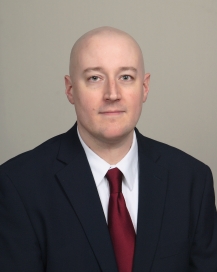
Mr. Joel Zlotnick
Security Fibers: Strategies for Optimization
July 27, 2020
Location: Access Grid---All SPACT Campuses
Security fibers and planchettes are among the oldest anti-counterfeiting technologies and remain popular today for security paper substrates. However, determining whether security fibers are appropriate for a particular document is only a starting point in the design process, and might even be considered a subordinate question to the design considerations that can support or inhibit the effectiveness of a security fiber implementation, or, equally, the implementation of any security feature technology. This presentation explores considerations for security fiber deployments, to include visible and UV fiber color, shape and size, proprietary and commercial fibers, the role of fibers in substrate uniqueness, user ergonomics and other technology and design variables associated with this class of security feature.
Bio:
Joel Zlotnick is employed by the U.S. Department of State, Bureau of Consular Affairs, Counterfeit Deterrence Laboratory as a supervisory physical scientist. His current work involves research in security artwork and design techniques for maximizing counterfeit deterrence and facilitating counterfeit detection. He is an instructor on security documents and counterfeit detection at the U.S. Foreign Service Institute, and develops training courses on counterfeit detection topics such as security feature authentication, fraud techniques and printing process identification. In a previous position at the U.S. Homeland Security Investigations Forensic Laboratory (HSI-FL), Mr. Zlotnick performed forensic examinations in the areas of questioned documents, ink comparison, counterfeit link analysis and audio/video enhancement, and authored many counterfeit deterrence evaluations. He was also previously employed by the U.S. Secret Service, where his duties included counterfeit document examination and link analysis, adversarial analysis and counterfeit detection training. Mr. Zlotnick holds a B.S. in chemistry and M.S.F.S. in forensic science.

Mr. Brent Gromer
Digital Evidence: Law Enforcement’s New Frontier
June 12, 2020
Location: Access Grid---All SPACT Campuses
Bio:
Supervisory Special Agent with the South Dakota Division of Criminal Investigation, Internet Crimes Against Children Commander
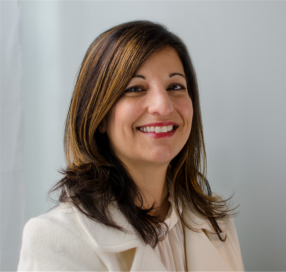
Ms. Cynthia Hetherington
Advanced Social Media Investigations
June 8, 2020
Location: Access Grid--All SPACT Campuses
Social media platforms are an important aspect of any online investigation. This advanced class is for you, if you hold the skills to conduct cursory searches but want to be on top of your game with the latest search tools for locating and uncovering social media users and their online content.
Upon completion of the course, field investigators will be able to
- Learn how to discover intelligence by investigating popular social media platforms and search engines as well as gain knowledge of new social media platforms on the horizon
- You will review social media pages, learn how hashtags and images can play a role in a case, and identify further leads.
Field investigators will be able to conduct social media investigations using specialized search engines and conduct a CARA Analysis: Characteristics, Associations, Reputation, and Affiliations.
Bio:
Cynthia Hetherington, MLS, MSM, CFE, CII is the founder and president of Hetherington Group, a cyber investigations consulting, publishing, and training firm. With over two decades of expertise, Ms. Hetherington is a leader in due diligence, corporate intelligence, and cyber investigations. She is the author of three books on conducting cyber investigations and annually trains over 7,200 investigators, security professionals, attorneys, accountants, auditors, military intelligence professionals, and federal, state, and local agencies on best practices. She shares her expertise in this increasingly data-intensive, cyber focused-world through the publication of an industry newsletter, an online blog, and by hosting the annual OSMOSIS Conference.
Ms. Hetherington leads national and international investigations in corporate due diligence and fraud, personal asset recovery, and background checks. With a specialization in the financial, pharmaceutical, and telecommunications industries, her cyber investigations have recovered millions of dollars in high profile corruption cases, assisting on the investigations of the top two Ponzi cases in United States history.
Ms. Hetherington shares her experiences and expertise as a keynote speaker and contributor at women-focused technology events and conferences across the U.S. She is an active member in the Women in Security Forum, the Women’s President Organization, and collaborates with The National Center for Women and Information Technology on drawing young girls into the profession. Ms. Hetherington serves as a lecturer and mentor to CybHER.org and RocketGirls at CyberSpace Camps held at the Kennedy Space Center.
Ms. Hetherington is a recipient of the Association of Certified Fraud Examiners’ James Baker Speaker of the Year Award. In 2019, she was honored with the Enterprising Woman of the Year Award by Enterprising Women Magazine and the CybHER Warrior Award by Dakota State University Madison Cyber Labs. She was shortlisted for the coveted 2019 Women in IT New York’s Entrepreneur of the Year Award. Ms. Hetherington was named a 2019 finalist in the esteemed Ernst & Young LLP New Jersey Entrepreneur of the Year Awards.
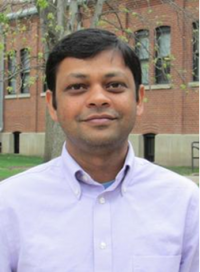
Dr. Prasoon Diwakar
Laser Produced Plasmas for Diagnostics and Instrumentation: Application to Forensic Science
December 10, 2019
Location: Access Grid---All SPACT Camupuses
Bio:
Assistant Professor of Mechanical Engineering, South Dakota School of Mines and Technology
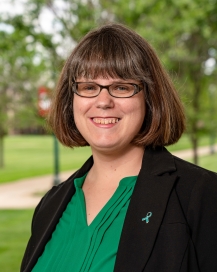
Dr. Bridget Diamond-Welch
Sexual Violence in South Dakota: Current and Forthcoming Issues
December 3, 2019
Location: Access Grid---All SPACT Campuses
Bio:
Associate Professor of Political Science, University of South Dakota
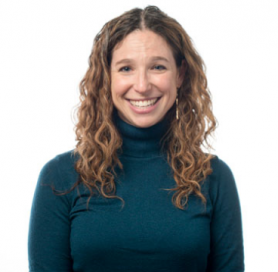
Dr. Meredith Gore
Wildlife Trafficking & Illicit Networks
July 10, 2019
Location: Access Grid---All SPACT Campuses
Bio:
Associate Professor in the Department of Fisheries & Wildlife at Michigan State University
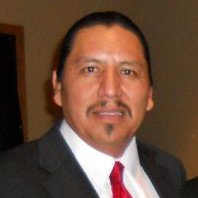
Mr. James Rattling Leaf
Protecting Tribal Cultural Heritage Utilizing Emerging Technologies
July 3, 2019
Location: Access Grid---All SPACT Campuses
Bio:
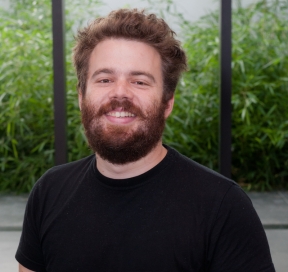
Dr. Nick Nikiforakis
Why Hack When You Can Scam?
June 12, 2019
Location: Access Grid---All SPACT Campuses
Bio:
Nick Nikiforakis, Ph.D., is an Assistant Professor in the Department of Computer Science at Stony Brook University. He is the director of the PragSec lab where students conduct research in all aspects of pragmatic security and privacy including web tracking, mobile security, DNS abuse, social engineering, and cyber crime. He has authored more than 60 academic papers and his work often finds its way to the popular press including TheRegister, SlashDot, BBC, and Wired. For his work, he received a best paper award from ISC 2014, an Honorable Mention from PETS 2016, and a Distinguished Paper Award from NDSS 2017. His research is supported by the National Science Foundation and the Office of Naval Research and he regularly serves in the Program Committees of all top-tier security conferences.
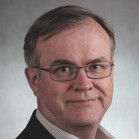
Mr. Michael Loughnane
Criminal Essentials—The Needs of a Criminal Network
June 5, 2019
Location: Access Grid---All SPACT Campuses
Bio:
Mike Loughnane began his career in federal law enforcement in 1978, becoming a special agent in the Office of Inspector General community in 1981. Over a 27-year career he conducted complex financial crime, fraud and cybercrime investigations. Upon his retirement in 2007 Mike joined Booz Allen Hamilton as an IT security expert where he managed computer network security accreditation teams positioned at U.S. government clients. In 2010, he was contracted as an instructor for the U.S. government to develop and deliver analytical and critical thinking training in counter threat finance to the intelligence community, federal law enforcement and the regulatory agencies.
Starting Loughnane Associates, LLC, in 2016 today Mike continues to delivery financial crime investigation training and public speaking to law enforcement, military, intelligence and the international anti-money laundering and counter terror finance community.
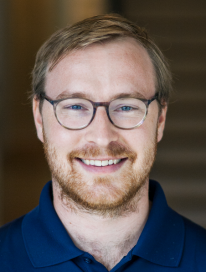
Dr. Sam Blazek
Examining Privacy, Modularity, and Affordances in Illicit Markets
May 13, 2019
Location: Access Grid Alll SPACT Campuses
Bio:
As IST Research’s Chief Scientist and Director of R&D, Sam guides the design of quantitative approaches to intelligent data collection, processing, and segmentation. Sam has 7+ years of experience serving U.S. government research organizations in roles spanning data collection, information extraction, machine learning algorithm design and implementation, and qualitative and quantitative methodological review. He served on DARPA’s Memex and QCR programs, and oversees IST’s current DARPA projects and counter-trafficking portfolio. Sam received an M.S. in Information Systems in 2014 and a Ph.D. in Information Systems in 2017 from the University of Texas at Austin, and holds a B.A. from Dartmouth College.

Ms. Lisa Gennaro
Human Trafficking in South Dakota
January 22, 2019
Location: Access Grid---All SPACT Campuses
The presentation will cover the ever-growing human trafficking issue in the Black Hills area. I-90 and I-29 are known as the “Midwest Pipeline” delivering trafficking victims to cities across the country. Learn more on how you can spot signs of human trafficking and how to report it.
Bio:
Co-chair of the Task Forces Public Awareness and Outreach Committee (SD Highway Patrol)
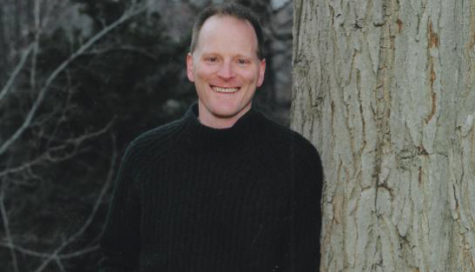
Dr. Steve Simske
Advanced Analytics, Intelligence and Processes for Disrupting Operations of Illicit Supply Networks
October 16, 2018
Location: Acces Grid---All SPACT Campuses
Bio:
Prior to joining Colorado State University in 2018 Dr. Steve Simke was an HP Fellow and CT/Director in security printing and imaging for Hewlett-Packard laboratories. While at HP Simske worked in biomedical imaging and signal processing; image, text and speech understanding; classification and security printing for 23 years. Managed and provided technical leadership and contribution to worldwide technology, intellectual property, productization and research roadmaps.
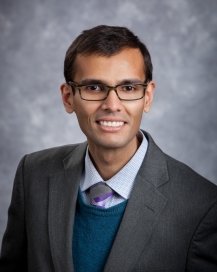
Dr. Saurav Kumar Dubey
Cooperative Game Theory and Network Flow Optimization Models for Studying Illicit Supply Chains
July 10, 2018
Location: Access Grid, All SPACT Campuses
Bio:
Dr. Saurav Kumar Dubey is an Assistant Professor at the Department of Industrial Engineering at South Dakota School of Mines and Technology. His research interests include Strategic Cost Management, Game Theory, Cost/Benefit Optimization and Transportation Economics. Dr. Kumar Dubey has presented his research findings on cooperative games-based Highway Cost Allocation at national conferences such as Institute for Operations Research and the Management Sciences (INFORMS), Institute of Industrial and Systems Engineers (IISE) and Transportation Research Board (TRB). Dr. Kumar Dubey received his Ph.D.in Industrial Engineering from the University of Tennessee at Knoxville. In addition, he holds a Master’s degree in Mechanical Engineering from Boston University and Bachelor’s degrees in Mechanical Engineering and Mathematics from Southern Methodist University.
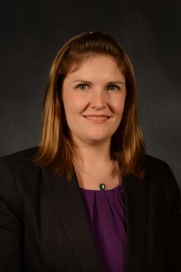
Ms. Lisa Tolli
Fraud and USPS: A Focus on Stamps
June 13, 2018
Location: Access Grid All SPACT Campuses
Bio:
Lisa Tolli is a Forensic Document Examiner with the US Postal Service, Forensic Laboratory Services, located in Dulles, Virginia. She began her career in forensic science with USPS in 2008, and prior to that worked in a molecular biology research lab. She received her Bachelor’s Degree in Forensic Science from the University of New Haven in West Haven, Connecticut, and her Bachelor’s Degree in Biological Sciences from Fordham University in Bronx, NY. Lisa is a member of the American Academy of Forensic Sciences Questioned Documents Section, as well as the American Society of Questioned Documents Examiners. In her current position, Lisa also serves as the Internship Coordinator for Forensic Laboratory Services.
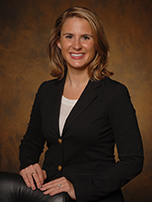
Ms. Kristina Montanaro Schrader
What is the Dark Web?
July 31, 2017
Location: Access Grid----All SPACT Campuses
Bio:
Kristina Montanaro Schrader joined Adams and Reese in 2015 and serves as the Anti-Counterfeiting Team Leader. Kristina brings significant experience in executing modern intellectual property enforcement strategies for many of the world’s best-known brands.
Kristina’s main focus is in crafting brand and content protection strategies for today’s market. She has negotiated voluntary agreements and developed alliances with various intermediaries, including Alibaba Group and Taobao Marketplace, Amazon, DHgate, and the major payment processors, to improve their responsiveness to rights-holder reports of online infringement.
Kristina previously served as an executive at the International AntiCounterfeiting Coalition, a trade association devoted to promoting intellectual property protection and combating product counterfeiting and copyright piracy. There, she executed strategic brand and content protection initiatives on behalf of hundreds of rights-holders from across all product sectors.
Kristina has extensive experience in intellectual property enforcement through the lens of payment processing. In her in-house role, she managed the development of a “follow-the-money”-focused initiative for rights-holders to attack the payment facilities of rogue sites trafficking in counterfeit and pirated goods through partnerships with major credit card networks and payment processors. As an extension of that initiative, Kristina also administered a collaborative program to increase enforcement efforts on multi-seller platforms, including Taobao, Tmall, AliExpress, DHgate, Etsy, Wish.com, and others.

Dr. Jan Lagerwall
Anti-counterfeiting with Liquid Crystal-Generated Unclonable Patterns
July 27, 2017
Location: Access Grid--All SPACT Campuses
Liquid crystals—well known for their successful commercial application in displays—have unique optical properties, among them the ability to reflect light selectively and dependent on the viewing angle: look at the liquid crystal along one direction and it appears strongly red, tilt the sample and it looks blue. By producing a sample with spheres of such liquid crystal, an intricate pattern can be generated, which changes dynamically as different sample areas are illuminated, and which contains additional hidden information thanks to its well-defined polarization state. Moreover, since the spheres are arranged in a random fashion, we believe that each pattern is unique in a way that is out of control of the producer, to the extent that even the manufacturer of the original would not be able to make a copy. In an interdisciplinary research thrust at the University of Luxembourg, involving computer and materials scientists, we are exploring the potential of using such liquid crystal sphere samples for secure authentication tokens, which can be produced at high throughput at low cost and be integrated into valuable objects to prove their authenticity. In the presentation, the basic principles of the technique and the current state of the research will be presented.
Bio:
Jan Lagerwall was born in Göteborg, Sweden, where he also obtained his M.Sc. (Physics, 1997) and Ph.D. (Materials Science, 2002), both from Chalmers University of Technology. As a postdoctoral researcher he worked with N. A. Clark (CU Boulder), G. Heppke (TU- Berlin) and F. Giesselmann (U. Stuttgart). In 2007 he set up his first research group in materials physical chemistry at Martin Luther University Halle-Wittenberg, moving to South Korea and Seoul National University in 2010, where he set up a new group as part of an transdisciplinary graduate school. Since 2014 he is full professor in physics at the University of Luxembourg, leading the Experimental Soft Matter Physics group. His research focuses on soft matter physics, chemistry and materials science, revolving around liquid crystals but with many contact points with other fields, from fiber spinning and microfluidics to art, architecture and security. The driving force is a deep fascination and enthusiasm for the scientific beauty of the field as well as the diverse application possibilities arising through cross fertilization with other disciplines. Since 2015 he holds an ERC Consolidator Grant, working on a project that aims to demonstrate the potential to use liquid crystals in novel contexts, chiefly soft robotics, secure authentication and wearable technology.
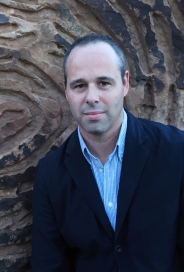
Dr. Patrick Buzzini
On the forensic contribution of micro-Raman spectroscopy to the chemical characterization of inkjet printer inks—an investigative approach
July 20, 2017
Location: Access Grid---All SPACT campuses
The application of micro Raman spectroscopy to characterize and discriminate colored inkjet printer inks is discussed. From a forensic science perspective, spectroscopic data are typically obtained to evaluate similarities between questioned specimens and reference samples to address questions about their source. Suspected objects (i.e., printers) are not always available to conduct such comparative examinations. In this project, the potential of the Raman technique is explored to evaluate its suitability to produce investigative leads in cases where a suspected printer needs to be developed. The factors that make such an approach successful for an investigative goal will be discussed. The Criminal Investigative Division, Treasury Obligations Section of the United States Secret Service, provided the samples for this study. In the context of their investigations on counterfeited banknotes, USSS specialists have observed that more than 60% of all counterfeit banknotes are produced using this inkjet printing technology. The overall goal is to investigate if Raman data gathered from the three microscopic colored spots (i.e., cyan, magenta, and yellow) of inkjet printed documents constitute, all together, a chemical signature sufficiently discriminating to provide reliable investigative leads in a time-effective and non-destructive manner. During this research it is expected to develop a statistical approach that can be reliably and objectively differentiate between samples from different sources based on minor spectral differences and to evaluate if different color spots from the same source can be treated as independent pieces of information. This study will also compare to the traditional method of thin layer chromatography to inform questioned document examiners about the complementarities between the two approaches.
Bio:
Dr. Patrick Buzzini is an associate professor in forensic science with the Department of Forensic Science at Sam Houston State University, in Huntsville, TX. Dr. Buzzini obtained a doctoral degree in forensic science from the oldest forensic science academic institution in the world, the University of Lausanne, in Switzerland. Dr. Buzzini has more than 15 years of experience as an instructor, researcher and caseworker in criminalistics, with emphasis in trace evidence. He has developed numerous courses in criminalistics, trace evidence, questioned documents, and physical evidence interpretation at both undergraduate and graduate levels. He has authored and co-authored more than twenty publications in peer-reviewed scientific journals, with emphasis in trace evidence. He has also authored or co-authored fifty oral and poster presentations to forensic conferences nationally and internationally. Dr. Buzzini has organized workshops and training sessions to practitioners in the field (i.e., forensic laboratory personnel) nationally and internationally as well as continuing education courses to the legal community (defense counselors, prosecuting attorneys, and judges). Dr. Buzzini is a fellow of the American Academy of Forensic Sciences (AAFS) where he currently serves as the Program Chair of the criminalistics section. He is a member of the American Society of Trace Evidence Examiners (ASTEE), and an associate member of the International Association for Identification (IAI). He is also a member of the Chemistry/Instrumental Analysis Scientific Area Committee with the Organization of Scientific Areas Committees (OSAC), National Institute of Standards and Technology (NIST). His research interests include the forensic applications of microscopy and spectroscopic methods (i.e., Raman spectroscopy) to various types of trace evidence and questioned documents as well as problems of physical evidence interpretation.
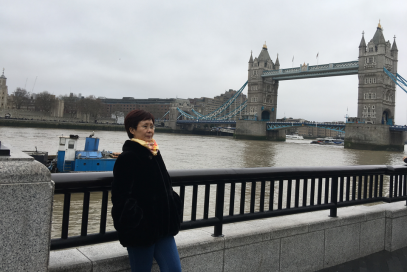
Dr. Xuemei Bian
Why does the Consumer Buy Fakes?
July 13, 2017
Location: Access Grid---All SPACT campuses
Despite companies, national governments, and enforcement agencies devoting substantial resources to tackling this issue, counterfeiting appears to be increasing at a faster pace than ever before. Consumer demand for counterfeit luxury brands is often viewed as “unethical”, but the demand is also robust and growing. The aim of this seminar is to provide a better understanding of the consumer demand side of counterfeiting by summarizing the findings of my research over last decade. The key areas covered include: counterfeits as products, counterfeits as brands, psychological factors influencing counterfeit related consumption behaviour, and the cognitive process consumers going through when buying counterfeits.
Bio:
Dr Xuemei Bian is Senior Lecturer in Marketing at the University of Kent Business School and is the Director of Studies for the BSc Marketing Programme. Before joining the Business School of the University of Kent she held faculty posts at the University of Hull and the University of Nottingham. She has an undergraduate degree in International Business (1993), an MSc in Management Research (2003), and a Ph.D. in Marketing (2006). Her Ph.D. thesis focuses on consumer decision making strategies concerning unethical/illegal counterfeit products and was supported by the Retail Organisation. She was awarded a Ph.D. with a result of no corrections after ‘viva voce’ and her thesis is held by the library of Eindhoven University of Technology as an example of an outstanding Ph.D. thesis on the request of her external examiner, Professor Harry Timmermans.
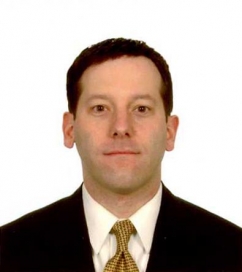
Mr. Robert Ramotowski
The Evolution of Latent Print Development Techniques
June 22, 2017
Location: Access Grid---All SPACT Campuses
This presentation will chronicle the discovery of the major techniques used for visualizing latent prints over the last century and a half. Techniques such as powdering, iodine fuming, and silver nitrate were developed during the 19th century. Ninhydrin, physical developer, cyanoacrylate fuming, lasers, and vacuum metal deposition were amongst some of the methods introduced during the 20th century. What new techniques or technologies are likely to be introduced in the 21st century? There have already been some interesting advances in the areas of chemical imaging, near infrared fluorescing powders, and the use of nanoparticles.
Bio:
Robert Ramotowski was awarded Bachelor of Science and Master of Science degrees in Chemistry from the George Washington University in 1993 and 1997, respectively. He has worked as a research scientist for the Secret Service since 1994. He is currently employed as the Chief Forensic Chemist with the Forensic Services Division of the United States Secret Service. His job duties include the coordination of forensic research activities within the laboratory (as well as liaison between other entities, including academia, industry, and other domestic and international law enforcement laboratories), particularly in the areas of latent print visualization, questioned document analysis, instrumental analysis, and ink and paper chemistry. He has published more than 30 articles on latent print and document chemistry and given more than 100 lectures and workshops in the United States as well as in more than a dozen countries. Mr. Ramotowski was the overall editor as well as a contributing author (seven chapters) of Lee and Gaensslen’s Advances in Fingerprint Technology, 3rd edition.
He was one of the founding members of the International Fingerprint Research Group and since 2015 has served as a member of the group’s steering committee. He has served as a member of the Editorial Boards of the International Association for Identification (IAI) since 2006 (and as a Technical Editor – Chemistry since 2014) and Forensic Science International since 2013. He was awarded Distinguished Member status from the International Association for Identification in 2008 and in 2012 was elected to the position of IAI International Representative. Mr. Ramotowski is a member of the International Association for Identification, Chesapeake Bay Division of the IAI, and the American Chemical Society.
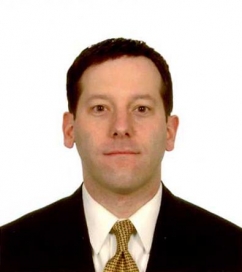
Mr. Robert Ramotowski
Document Authentication
June 22, 2017
Location: Access Grid----All SPACT Campuses
This presentation will cover the basic principles of document authentication. Document Examiners at the U.S. Secret Service are called upon to authenticate a variety of different types of identity and financial documents, including drivers licenses, social security cards, travelers checks, credit cards, gift cards, wills, and money orders. A review of chemical and physical erasures and obliterations will be given as well as the optical (e.g., infrared reflectance and luminescence) and physical (e.g., fiber examination) methods used for detecting these alterations. A review of standard printing processes will be provided including typography, offset lithography, gravure, intaglio, flexography, screen printing, thermography, inkjet, electrophotographic processes, dye diffusion thermal transfer, and thermal mass transfer. A case example of how the knowledge of these printing process characteristics are used to determine authenticity will be discussed.
Bio:
Robert Ramotowski was awarded Bachelor of Science and Master of Science degrees in Chemistry from the George Washington University in 1993 and 1997, respectively. He has worked as a research scientist for the Secret Service since 1994. He is currently employed as the Chief Forensic Chemist with the Forensic Services Division of the United States Secret Service. His job duties include the coordination of forensic research activities within the laboratory (as well as liaison between other entities, including academia, industry, and other domestic and international law enforcement laboratories), particularly in the areas of latent print visualization, questioned document analysis, instrumental analysis, and ink and paper chemistry. He has published more than 30 articles on latent print and document chemistry and given more than 100 lectures and workshops in the United States as well as in more than a dozen countries. Mr. Ramotowski was the overall editor as well as a contributing author (seven chapters) of Lee and Gaensslen’s Advances in Fingerprint Technology, 3rd edition.
He was one of the founding members of the International Fingerprint Research Group and since 2015 has served as a member of the group’s steering committee. He has served as a member of the Editorial Boards of the International Association for Identification (IAI) since 2006 (and as a Technical Editor – Chemistry since 2014) and Forensic Science International since 2013. He was awarded Distinguished Member status from the International Association for Identification in 2008 and in 2012 was elected to the position of IAI International Representative. Mr. Ramotowski is a member of the International Association for Identification, Chesapeake Bay Division of the IAI, and the American Chemical Society.
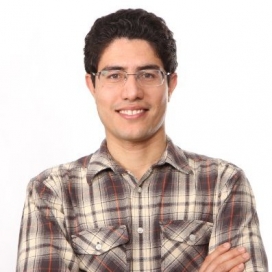
Dr. Mohammadreza (Reza) Khorasaninejad
Metasurfaces: Multifunctional Photonic Platform
June 7, 2017
Location: Access Grid, All SPACT Campuses
Metasurfaces have established a new paradigm for controlling the basic properties of light (amplitude, phase, and polarization) with subwavelength spatial resolution using a single ultra-thin layer. Flat optics based on this platform has the potential to replace or complement conventional refractive/diffractive components in numerous optical devices and systems. In this seminar, I will give an overview of our work on dielectric metasurfaces, which have led to high performance components including meta-lenses and meta-holograms. The physical mechanisms leading to highly efficient metasurfaces, in addition to the design principles that enable one to overcome various challenges common to both conventional refractive and diffractive optics will be discussed. Finally, I will highlight the role and the sizeable impact that this platform technology could have in further shaping the field of optics.
Bio:
Dr. Mohammadreza (Reza) Khorasaninejad received his M.Sc. (Hons.) degree from Amirkabir University of Technology, Tehran, Iran, in 2008, and Ph.D. degree from the University of Waterloo, Waterloo, Canada, in 2012, both in electrical engineering. He is currently a Research Associate in the group of Federico Capasso at Harvard University. His research interests include nano-photonics, nano-optics, and optical materials.
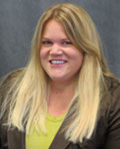
Dr. Ashley Podhradsky
Investigating an FBI Network Investigative Technique (NIT): Reverse Engineering a NIT that Unmasks TOR Users
April 20, 2017
Location: Access Grid--All SPACT Campuses
The FBI confiscated three servers that were housing illegal content. They brought the servers back to the field office and deployed a Network Investigative Technique (NIT) to the server to deanonymize or user’s true IP address. Dr. Ashley Podhradsky lead the defense digital forensics expert witness team to understand and reverse engineer the NIT, determine if the process was repeatable and produced valid results. This seminar will go over the case, the process and findings.
Bio:
Associate Professor of Digital Forensics & Information Assurance
Dakota State University
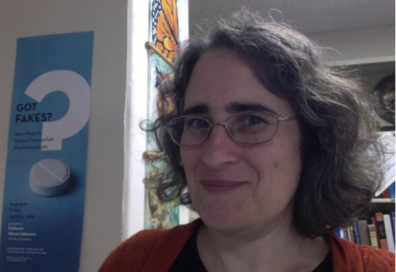
Dr. Marya Lieberman
Got Fakes? Paper Test Cards for Detection of Low Quality Pharmaceuticals
February 8, 2017
Location: Access Grid, All SPACT Campuses
Falsified and substandard pharmaceuticals are common in countries that lack the technological and regulatory infrastructure needed to detect them. Dr. Lieberman and her colleagues have developed paper analytical devices (PADs) for field screening of dosage forms of antibiotics and other medicines in low resource settings. Dr. Lieberman will describe how her research group designed these cards for manufacturability and implemented them in a large scale survey of antibiotic quality in western Kenya.
Bio:
Professor of Chemistry and Biochemistry
University of Notre Dame
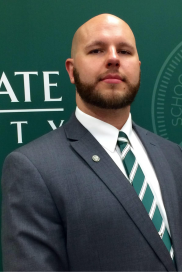
Dr. Brandon Sullivan
Developing Evidence-Based Approaches to Anti-Counterfeiting Strategy
October 11, 2016
Location: Access Grid, All SPACT Campuses
Product counterfeiting represents a growing, global risk that poses many negative consequences for consumers, businesses, governments, national security, the economy, and society as a whole. Research and field experience contend that the most effective anti-counterfeiting approaches are strategic, proactive, and comprehensive, using evidence and analysis to shrink counterfeiting opportunities. The Michigan State University Center for Anti-Counterfeiting and Product Protection (A-CAPP) is focused on developing strategies to effectively detect, deter, and respond to the complex global issues of anti-counterfeiting and product protection of all products, across all industries, in all markets. Brand owners, government agencies, professional associations, and others share in the challenge of responding to counterfeit products. The A-CAPP Center serves as an independent, interdisciplinary, evidence-based hub, offering research, educational programs, information, and partnership opportunities designed to assist in protecting brands and products of all industries worldwide. This seminar provides an overview of the unique contributions of the A-CAPP Center to industry, government, and academia, and highlights the challenges of assessing product counterfeit risks and developing anti-counterfeiting strategies to mitigate those risks.
Bio:
Brandon A. Sullivan is an Assistant Professor at the Michigan State University Center for Anti-Counterfeiting and Product Protection (A-CAPP). He earned his PhD from the Michigan State University School of Criminal Justice in 2015 and his Bachelor and Master of Science in Criminal Justice from Bowling Green State University. In addition to his work with the A-CAPP Center, he serves a Research Associate with the Research Foundation of the City University of New York (CUNY), Research Affiliate with the National Consortium for the Study of Terrorism and Responses to Terrorism (START), and Faculty Affiliate with the MSU College of Law. He is also co-Principal Investigator and Project Manager for the U.S. Extremist Crime Database (ECDB) Financial Crimes project. His research focuses primarily on emerging areas of crime and justice, particularly those involving transnational criminal enterprises and networks, including fraud, product counterfeiting, extremist financial crime, and environmental/conservation crime. Other research interests include organizational deviance, crime prevention, policing, law and society, and media and crime, as well as social network analysis and mixed methods research.
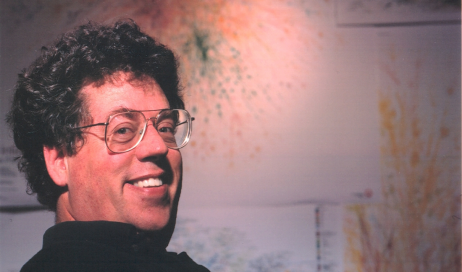
Mr. Bill Cheswick
Computer Security: I Think We Can Win!
October 3, 2016
Location: Access Grid, All SPACT Campuses
By a number of important measures, the Internet is working spectacularly well. But there is crime and espionage as well, and the attackers are highly capable, motivated, and spectacularly successful. Meanwhile, experienced security people despair. The same bugs seem to persist, the lessons of the past ignored or forgotten. Despite the incredible progress of Moore’s Law, our software isn’t much better than thirty years ago. This is going to get better over the coming decades. We have tools and techniques we haven’t explored or deployed very far. We can get the upper hand—yes, it is possible to write a secure program.
Bio:
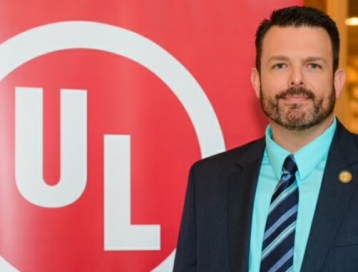
Mr. Jason Daniels
Introduction to Health and Safety Consequences of Intellectual Property Crime
July 27, 2016
Location: Access Grid, All SPACT Campuses
Bio:
Jason Daniels is the Senior Investigations Manager with Underwriters Laboratories’ Global Security & Brand Protection Unit. His primary responsibility is to facilitate intellectual property theft investigations in the Americas and lend support to the EMEA. Mr. Daniels has focused his efforts on combatting counterfeiting for over 14 years. He has written curriculum that has been presented throughout the United States concerning fraud investigations and has been a law enforcement instructor for over 18 years. Prior to entering the corporate arena Mr. Daniels was a sworn law enforcement officer in the State of North Carolina. His last assignment as Special Agent in Charge with the Secretary of State’s Office. He is a graduate of Shaw University and continued his educational development at the University of Louisville and Michigan State University.
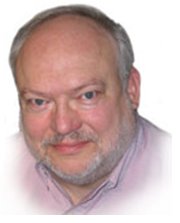
Mr. George Gibson
Smart Packaging for Brand Protection & Anti-Counterfeiting
July 6, 2016
Location: Access Grid, All SPACT campuses
Bio:
Director for Marketing Strategy, PARC, A Xerox Company, Rochester, NY

Mr. James Klatt
Intellectual Property Rights Overview
June 22, 2016
Location: Access Grid---All SPACT Campuses
Bio:
Supervisory Special Agent, Intellectual Property and Cyber-enable Crimes Unit, Federal Bureau of Investigation

Mr. Lars Suneborn
Securing Biometrics in Physical Access Control Systems (PACS)
June 8, 2016
Location: Access Grid, All SPACT Campuses
Bio:
Mr. Suneborn is Director, Training Programs for the Smart Card Alliance. He coordinates instructors and lead updates to the Alliance’s Certification Courses and is currently establishing The Smart Card Alliance Education Center in Crystal City, VA. He is the Instructor for the Certified System Engineer ICAM PACS, CSEIP Certification Course.
Prior to joining the Smart Card Alliance, during his 30 + year career in the security industry, Mr. Suneborn have served in various capacities with HIRSCH Electronics, Oberthur Technologies and has become recognized as a Physical Access Control System (PACS) subject matter leader. Suneborn is a frequent speaker and an active member of the SCA ACC. Suneborn developed and conducted customized, agency specific week-long training courses and courseware as well as Train-the-Trainer activities for a wide variety of US, Canadian and British security agencies at facilities worldwide. Suneborn is often specifically requested by name for specialized training requirements.
Suneborn is actively promoting Smart Card, biometric and PKI cryptographic technologies as vital components in overall system designs for high-risk, high-security facilities nationally and internationally. He is guiding US agencies in their efforts to achieve HSPD-12/ FICAM compliance.

Dr. Hugh Britten
Potential Uses for DNA Biomarkers in Artifact and Document Authentication
April 7, 2016
Location: Access Grid, All SPACT Campuses
Bio:
Professor, Department of Biology, University of South Dakota
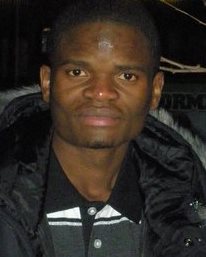
Mr. Fredrick Ochieng
Fast Isotope Ratios Mass Spectrometry (FIRMS): A Rapid Method for the Determination of Counterfeit Pharmaceuticals
March 17, 2016
Location: Access Grid---All SPACT Campuses
Bio:
Graduate Research Assistant, Department of Chemistry and Biochemistry, South Dakota State University

Mr. Jared Goodwin
Enabling the American Dream – An Overview of U.S. Citizenship and Immigration Services’ Secure Identification Document and Printing Program
January 13, 2016
Location: Access Grid---All SPACT Campuses
Bio:
Division Chief, Document Management Division, U.S. Citizenship and Immigration Services
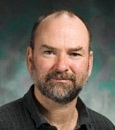
Dr. P. Stanley May
Recent Advances in Upconversion Nanoparticle Inks in Security Printing
December 3, 2015
Location: Access Grid---All SPACT Campuses
Bio:
Professor, Department of Chemistry, University of South Dakota
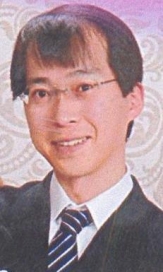
Mr. Takaharu Kobayashi
Structural Color for Security Printing: Patterned Robust Colloidal Crystals
November 19, 2015
Location: Access Grid---All SPACT Campuses
Bio:
Research Institute of National Printing Bureau (Japan)
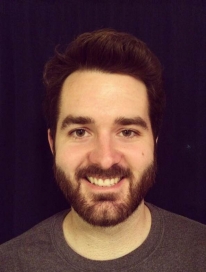
Mr. Forest Thompson
Porous-wall Hollow Glass Microspheres for Security Printing Applications
November 4, 2015
Location: Access Grid--All SPACT Campuses
Bio:
M.S. Degree Candidate, Materials Engineering and Science Program, South Dakota School of Mines and Technology

Dr. Brian Logue
Countering Counterfeiting of Drugs: Unique Fluorescent Inks for Direct Printing onto Pharmaceuticals
October 28, 2015
Location: Access Grid---All SPACT Campuses
Bio:
Associate Professor, Department of Chemistry and Biochemistry, South Dakota State University

Dr. Jennifer Pazour
Smart Logistics Systems and Their Need for Security
October 21, 2015
Location: Access Grid---All SPACT Campuses
Bio:
Assistant Professor, Industrial and Systems Engineering, Rensselaer Polytechnic Institute

Mr. Jacob Petersen
Upconverting Nanoparticle Security Inks Based on Hansen Solubility Parameters
October 15, 2015
Location: Access Grid -All SPACT Campuses
Upconverting Nanoparticle Security Inks Based on Hansen Solubility Parameters
Bio:
Ph.D. Candidate, Materials Engineering and Science Program, SD School of Mines and Technology
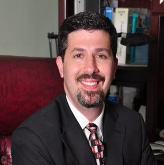
Mr. Daniel DiMase
Ensuring Cyber Physical System Security
July 24, 2015
Location: Access Grid, All SPACT Campuses
Bio:
Director of Compliance and Quality, Honeywell International Inc.
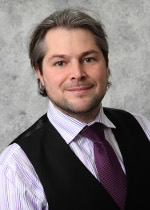
Dr. Cedric Neumann
Application of Functional Data Analysis to Chemical Data ~ Comparison, Classification and Database Search of Forensic Ink Chromatograms
July 9, 2015
Location: Access Grid All SPACT campuses
Ink examination is used in a variety of criminal investigations. Types of ink examination include identification, comparison, and dating. In this presentation, we concentrate on the identification and comparison of ink samples. Identifying ink samples is a very complex problem. Not only are there many types of inks in existence, but ink with the same formula can be used in multiple models of pens from multiple brands and manufacturers. Other problems can affect the comparison between ink samples, such as the degradation of ink samples due to time and other environmental factors.
Mathematical algorithms have already been developed to automatically compare an ink sample with other samples in a database with the goal of determining the brands, models, and years of manufacture of pens that could have produced the sample. Most often these algorithms assume some multivariate distribution of the ink characteristics and use some data reduction technique to show that inks can be differentiated in quasi-ideal situations. In this presentation, we propose a new approach to mathematically describe ink samples using functional data analysis. This method does not make any assumption on the data and can account for less than ideal samples.
Functional data analysis is a fairly new statistical method which deals with data of functional nature. Such data often arises during chromatographic or spectroscopic analysis of material of forensic interest, where the data is represented as a function of time. In this particular case, we characterize the chromatograms of ink samples produced by High Performance Thin Layer Chromatography as functions of time and wavelength. We built and tested several algorithms to register multiple ink samples that were analyzed at different times, or by different analysts, into a common space, compare ink samples using a metric of similarity, and to use these comparisons to cluster large databases of inks. Our algorithms can readily be implemented to search an unknown ink sample and retrieve a list of ink samples most similar to the ink sample in question. Finally, we note that similar algorithms can be developed for most forensic chromatographic or spectroscopic applications.
*This research is based upon the MSc research of Mr. Riley Burfield
Bio:
Assistant Professor,
South Dakota State University, Department of Mathematics and Statistics

Mr. James Rattling Leaf, Sr.
Counterfeit Indian Arts and Crafts
July 1, 2015
Location: Access Grid (all SPACT campuses)
Bio:
B.S. University of Colorado-Boulder
Rattling Leaf Consulting, LLC
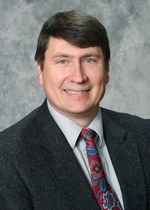
Dr. Norm Braaten
Responsible Conduct in Research
June 3, 2015
Location: Access Grid (all SPACT campuses)
Faculty and students must strive to act with integrity in all they do. In the process of carrying out research activities, the SPACT Center must comply with federal and state regulations and policies. Individual SPACT research investigators also must comply with all those regulations, polices and procedures governing research. The seminar will review the relevant responsible conduct in research.
Bio:
SDSU Research Compliance Coordinator

Dr. Jeevan Meruga
Authentication Applications using Smartphones
April 24, 2015
Location: Access Grid (all SPACT campuses)
In today’s world, smartphones are ubiquitous. Associated hardware and software security applications are emerging, particularly with regard to authentication. In this seminar, Jeevan Meruga discusses some of the most current built-in features and external attachments of smartphones that could turn them into authentication devices, and offers preliminary data to show the potential of the smart phone for these applications.
Bio:
Post-Doctoral Researcher, Center for Security Printing and Anti-Counterfeiting Technology
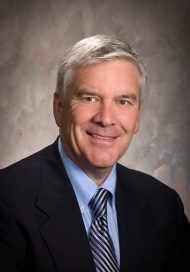
Mr. Martin Kenner
With the Increasing Incidence of Counterfeiting and Simulation of Goods, Why is it so Hard to Sell Security?
April 17, 2015
Location: Access Grid (all SPACT campuses)
Law enforcement and border management agencies around the world have clearly demonstrated the increasing incidence of both counterfeiting and simulation of material goods. The financial impact of these is enormous, as is the risk to product brands. Despite this evidence, product manufacturers and brand owners remain a difficult sell when it comes to incorporation of security features into product of packaging.
I will discuss some of the factors that contribute to this apparent conundrum from both sides of the issue – as a technical leader in a security business and as a technical leader of a product business, both within 3M. While I don’t pretend to have the answers to all questions, I hope to convey information that will help build an understanding of the business issues and therefore help the SPACT team plan to address the business issues as they address the technical issues when developing security solutions.
Bio:
Global Laboratory Manager, Public Security Business, 3M
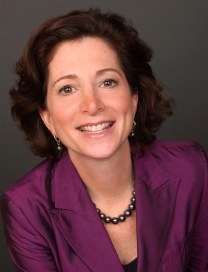
Ms. Pamela Pressman
A Holistic Approach to Protecting Intellectual Property
April 10, 2015
Location: Access Grid (all SPACT campuses)
In today’s global marketplace, protecting intellectual property (IP) is daunting. With a click of an email, trade secrets can be shared with competitors. A supply chain oversight can lead to counterfeit parts and faulty products. A coveted technology can be copied and immediately distributed around the world.
In this seminar, Pamela Passman, President and CEO of the Center for Responsible Enterprise And Trade (CREATe.org), shares insights into how to take a holistic approach to IP protection. She will discuss how to identify, assess and manage IP-related risks; outline the elements of an effective IP protection framework; and share examples of how companies, researchers and organizations can take proactive steps to prevent the loss of valuable assets.
Bio:
President and CEO
Center for Responsible Enterprise and Trade – CREATe.org
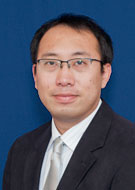
Dr. Mengyu Qiao
Touchscreen-based User Authentication Using Hand Biometrics
March 6, 2015
Location: Access Grid (all SPACT campuses)
User authentication plays an indispensable role in protecting computer systems and applications, but the development of touchscreen hardware and the user habit change post requirements for new authentication methods. Based on an extensive study of touchscreen hardware and biometric patterns, we present a robust user authentication scheme using biometric features of touch gestures. Discriminative features are extracted from the touch-point data, and used in statistical analysis for verification. We tested our scheme in a variety of experiments that involved multiple volunteers to perform various gestures. The analysis of experimental results and user feedback indicate that the new scheme delivers comprehensive measurements and accurate pattern classification for user authentication.
Bio:
Assistant Professor
Mathematics and Computer Science
South Dakota School of Mines and Technology

Mr. Daniel Stanton
Managing Risk in Global Supply Chains
November 21, 2014
Location: Access Grid (all SPACT campuses)
Supply chain risk is a critical issue for manufacturing companies, retailers, and consumers. In a global market with constant cost pressures, companies need to implement cost effective strategies for securing their supply chains. Daniel Stanton is VP of Education and Professional Development for MHI, the largest association of supply chain companies in the US. Mr. Stanton will address this challenge with us, discussing the recently published US Roadmap for Material Handling and Logistics, and providing case studies and models that reflect some of the challenges and opportunities facing businesses today.
Bio:
Vice President, Education and Professional Development
MHI

Mr. Jacob Petersen
Hansen Solubility Parameters for Development of Optically Variable Security Inks
November 7, 2014
Location: Access Grid (all SPACT campuses)
Modern security inks incorporate nanoparticles with novel properties to increase the complexity of a security ink for the purpose of preventing counterfeit production. Typically the nanoparticles used are dispersed in a polymer matrix to form a mechanically robust device while maintaining the unique properties of said nanoparticles. Dispersing nanoparticles in a given ink has typically relied on generically matching the polarity of the nanoparticle capping agent to that of the polymer and solvents used to print the ink. This research focused on identifying a quantitative approach to dispersing nanoparticles through characterizing the Hansen Solubility Parameters (HSPs) of various nanoparticles synthesized for security inks. Once HSPs were obtained, solvents and polymers were chosen to form an optimal security ink. The printed nanoparticle film microstructure was varied by controlling the ink HSPs throughout evaporation to form continuous, discontinuous, and disrupted film microstructures. Finally, an optically variable ink was produced as a proof of concept.
Bio:
Ph.D. Candidate, Materials Engineering and Science Program, South Dakota School of Mines and Technology
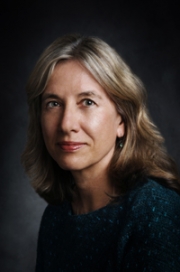
Dr. Judy Zaichkowsky
The Psychology Behind Trademark Infringement and Counterfeiting
October 7, 2014
Location: Access Grid (all SPACT campuses)
Bio:
Professor of Marketing in the Beedie School of Business
Simon Fraser University

Dr. George Wicks
Porous Wall Hollow Glass Microspheres…..New Materials for New Applications in Energy, Environmental Remediation, Defense and Medicine
September 18, 2014
Location: Access Grid: All SPACT Campuses
A new class of materials, called Porous Wall Hollow Glass Microspheres (PWHGMs), was developed at the Savannah River National Laboratory. These tiny glass micro-balloons are about one-half the diameter of a human hair and can range in size from 2 to 100 microns. The thin outer shells are about one micron thick and what makes these microspheres one-of-a-kind is that the team has been able to induce and control an interconnected, through-wall porosity, on a scale of 100 to 1,000 Angstroms. This porosity is then used to fill the microspheres with a variety of materials, including solids, liquids and gases, which result in unique composites having a variety of unique properties. This microsphere technology has been involved in more than a dozen different programs and applications in areas of energy, environmental remediation, defense and in medicine. PWHGMs have been patented, licensed, and are now being advanced for commercialization in various areas and disciplines, at the Applied Research Center of SC.
Bio:
Adj. Prof., GA Health Sciences Univ/ GA Regents University/Wicks Consulting

Mr. Takaharu Kobayashi
Banknote Manufacturing: Integration of Security
September 5, 2014
Location: Access Grid (All SPACT Campuses)
Banknotes are protected by many kinds of security features because they are important infrastructure that maintain economic activities and daily life. This seminar will consider the essence of banknote security through introduction of security features and manufacturing processes.
Bio:
SPACT Visiting Scientist (National Printing Bureau, Japan)
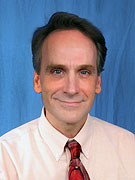
Dr. Douglas Wells
Photon Activation Analysis and its Potential Forensic, Authentication and Security Applications
July 30, 2014
Location: Access Grid: All SPACT campuses
Nuclear activation analysis using neutrons, charged particles and photons has a long history, with many applications in environmental, cultural and forensic disciplines. Each has their respective relative advantages, depending on the application. In the case of photons from electron-beam bremsstrahlung, advantages which may enable forensic and materials/parts authentication and security applications. These include (a) high penetrability, enabling analysis of
larger objects that are nearly uniformly activated, (b) non-destructive analysis of high-value or irreplaceable objects and materials, (c) production of shorter activation half-lives that enable more rapid return of objects and materials to their owners and (d) highly-directional beams that could readily function in industrial settings. These particular advantages have only been partially exploited. There remain many important applications that have never been fully explored or exploited. Among these are (i) industrial, criminal and arms-control forensics, (ii) authentication applications in medicine and industry, (iii) provenance applications archaeology, paleontology and museum sciences, (iv) contraband attribution and interdiction, (v) mining and hazardous/precious waste assay, (vi) environmental studies in pollution fate and transport and (vii) nuclear non-proliferation. This talk will focus on opportunities and potential of some these applications and the state of the art in these areas.
Bio:
Dean of Graduate Education and Professor of Physics
South Dakota School of Mines and Technology

Dr. Sara Church
Extreme Document Security - The Challenges of Protecting Currency
July 18, 2014
Location: Access Grid: All SPACT campuses
The seminar covered the complexities of protecting banknotes, their functional uses and present a way of thinking about those uses, counterfeit deterrence and authentication requirements.
Bio:
Banknote Scientist at Board of Governors, Federal Reserve System (retired)

Dr. Steven Simske
Security Printing Technologies, Competing with Zero
July 15, 2014
Location: Access Grid: All SPACT campuses
Security Printing technologies are enabled by variable data printing (VDP) available on all modern presses. When considering any security printing approach, you must be ready to potentially compete with zero—that is, zero incremental cost for security. The broad set of VDP based security printing approaches will be outlined in this talk, along with the ecosystem in which they function. I will show that zero cost is not always the optimum solution.
Bio:
Steven is an HP Fellow in the Printing and Content Delivery Lab (PCDL), and is the Director and Chief Technologist for the HP Labs Enterprise Round-tripping through Imaging and Classification for an Integrated Document Lifecycle Ecosystem (ERIC IDLE) program, which includes HP Lab’s Document Lifecycle and Security Printing portfolios.
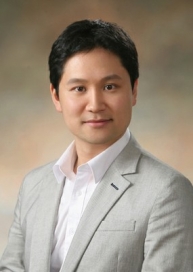
Dr. Sunghoon Kwon
Color-barcoded Magnetic Microparticles
July 2, 2014
Location: Access Grid (all SPACT campuses)
Bio:
Associate Professor, Seoul National University
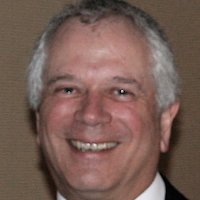
Mr. Ian Lancaster
Counterfeiting & Authentication: An Overview
May 9, 2014
Location: Access Grid (all SPACT campuses)
Bio:
Director, Reconnaissance International
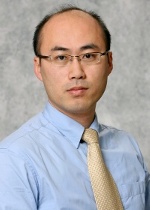
Dr. Manki Min
Cryptography and Product Authentication
April 11, 2014
Location: Access Grid (all SPACT campuses)
In this presentation, we introduce fundamental cryptographic functions such as public-key encryptions, cryptographic hash functions, message authentication codes, and digital signatures that can be used for authentication purpose. Then we discuss some examples of product authentication schemes which consists of cryptography and RFID systems.
Bio:
Assistant Professor, Computer Science Program, Dept. of Electrical Engineering and Computer Science, South Dakota State University
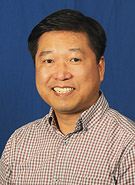
Dr. Haeyeon Yang
Basics of Holography & Applications to Security
March 28, 2014
Location: Access Grid (all SPACT campuses)
Holography has been used in various applications since its invention in 1940s by Dennis Gabor and others. Its importance has been recognized by the Nobel Prize in Physics awarded to Gabor in 1971. In this talk, basic aspects of creating holograms will be introduced. The current state of the art will be addressed, mainly based on the talks on practical holography presented at the conference of Photonics West on February 2014. Potential holography projects for security application will be discussed.
Bio:
Associate Professor, Department of Nanoscience and Nanoengineering, South Dakota School of Mines and Technology

Dr. Julie Yingling
Methamphetamine Markets: Roles, Structure, and Arrest Avoidance Strategies of Members
February 28, 2014
Location: Access Grid (all SPACT campuses)
This qualitative study of male and female methamphetamine manufacturers examines what positions exist within markets, the fluidity of those roles, and positions available to women. This study also examines the different strategies men and women use to prevent detection by law enforcement. Lastly, these strategies are compared to local law enforcement’s experiences and understanding of the methamphetamine manufacturing process.
Bio:
Assistant Professor, Department of Sociology & Rural Studies, South Dakota State University
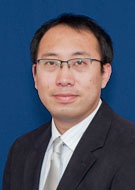
Dr. Mengyu Qiao
Multimedia Authentication and Forensics
February 14, 2014
Location: Access Grid (all SPACT campuses)
Product counterfeiting is a well-known problem, which has done significant damage to the production and distribution of physical goods for a very long time. In the past decade, the use of multimedia applications has significantly increased because of the advance in network bandwidth and storage capacity, and the use of smartphone makes rich-content applications further penetrate into daily life. Due to the ubiquitous availability of editing software for digital media, manipulation skills of digital media have been simplified and spreading extensively, which weakens our traditional trust to the integrity of digital media. Nowadays, forgery and piracy have become the major challenges to the applications of digital media. Therefore, various types of technologies have been developed to protect both physical and virtual products and counteract these growing threats. In this talk, I will introduce some vulnerabilities and potential attacks on digital media, and then discuss some mainstream approaches to authenticate digital media and protect its integrity. Furthermore, I will also talk about the some digital forensic research on analysis of fake and tampered media to reveal some trace and evidence for law enforcement and justice. Although this talk will mainly focus on digital media, some discussed solutions are also applicable to printed labels and tags.
Bio:
Assistant Professor, Department of Mathematics and Computer Science, South Dakota School of Mines and Technology
